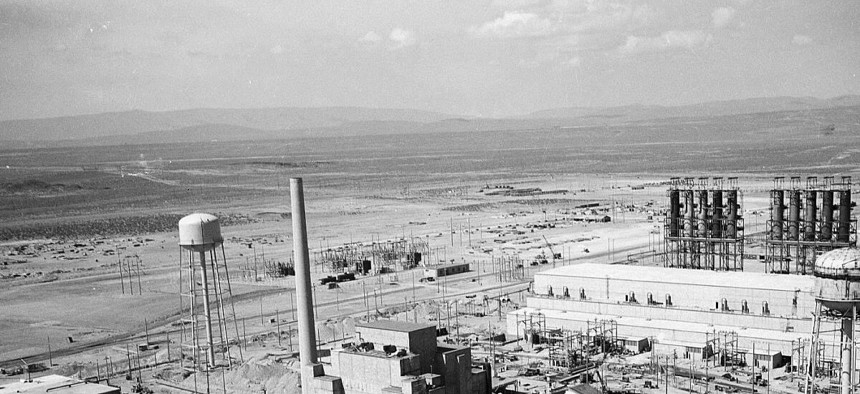
A photo of the Hanford B Reactor Area near Richland, Washington. , Wikimedia Commons
The Secret History of the Atom Bomb Is Now Available in Full Online
Arranged in 36 volumes, the final portions of the history of the Manhattan Project's development were posted only recently. By Bob Brewin
Lt. Gen. Leslie Groves, the military chief of the organization charged with developing the atomic bomb during World War II – operating under the code name of Manhattan Engineer District – commissioned an internal and classified history of the project in 1944.
That entire history has now been declassified and posted online, according to Steven Aftergood, who writes the Federation of American Scientists’ Secrecy News blog.
The history is arranged in 36 volumes posted on the Energy Department's OpenNet website. The final portions of the history -- dealing with intelligence and security and a supplement on foreign intelligence -- were posted in the past month.
The intelligence and security volume describes some 1,500 leaks between 1942 and 1946 at project sites scattered around the country from New Mexico to Washington State, California, Tennessee and Illinois.
Security was not to be achieved by the force of law or the threat of punishment, according to the history. Rather, "grounds for protecting information were largely patriotism, loyalty to the fighting men, and the reasoning that the less publicity given the project, the more difficult it would be for the enemy to acquire information about it and also, the greater would be the element of surprises rooted in shared values and common commitments”, the document stated.
The foreign intelligence supplement deals primarily with intelligence focused on German efforts to develop its own atomic bombs and U.S. operations to defeat them. That included the sabotage of a Norwegian plant that produced heavy water used in manufacture of plutonium used in bombs and chronicled in the 1965 movie, "The Heroes of Telemark," starring Kirk Douglas.




